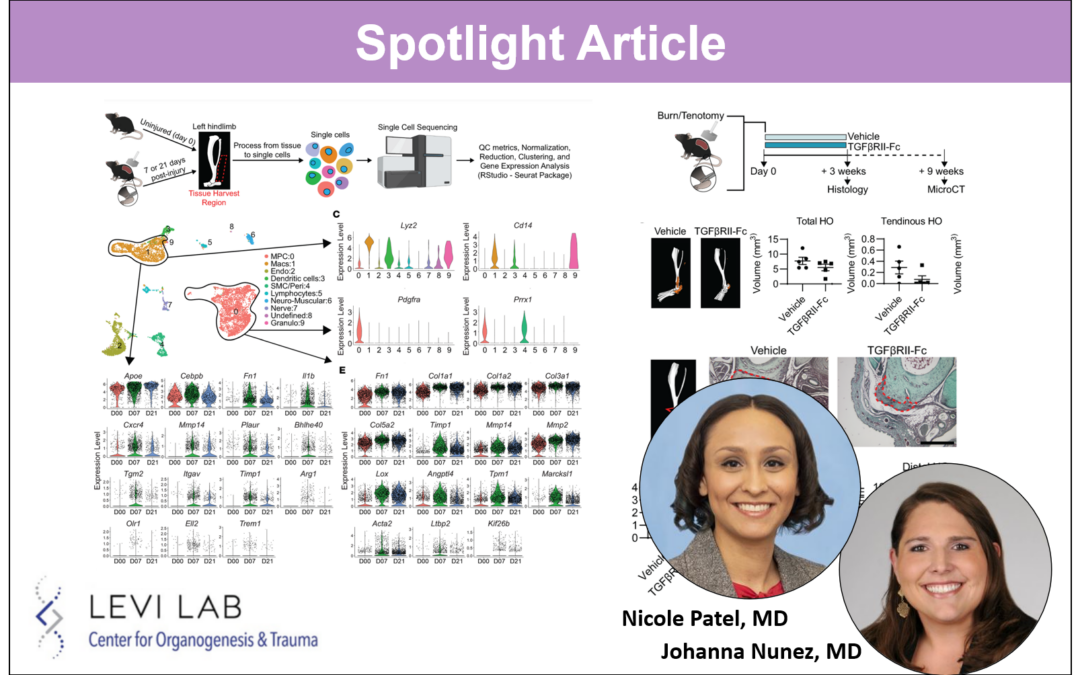The Levi laboratory is proud to present a publication in the Journal of Clinical Investigation (JCI) Insights entitled “Macrophage TGF-β signaling is critical for wound healing with heterotopic ossification after trauma.”
Inflammation has been a well delineated, heralding event in the pathogenesis of ectopic bone formation after musculoskeletal injury. Macrophages have long been implicated in both fracture healing and developmental biology, however their precise role in the formation of heterotopic ossification have remained putative in nature. Transforming growth factor–β1 (TGF-β1) plays a central role in normal and aberrant wound healing, but the precise mechanism in the local environment remains elusive. Here, using a mouse model of aberrant wound healing resulting in heterotopic ossification (HO) after traumatic injury, we find autocrine TGF-β1 signaling specifically in macrophages, and not the surrounding stromal cells as critical mediators of HO formation.
The research team led by Dr. Nicole Patel and Dr. Johanna Nunez of the Department of Surgery’s section of plastic surgery, observed the effect of interfering with this TGF-β1 signaling via ligand traps, ultimately mitigating post-traumatic HO formation. Given the correlation with HO and inflammatory cascades, these investigators hope to translate these findings to patient therapies, inhibiting ectopic bone and aberrant wound healing. This work exemplifies the talented research teams throughout the laboratory. Special thank yous to the University of Michigan Department of Surgery and Section of Plastic Surgery, Center for Molecular Imaging, and the rest of the Levi laboratory team.
PMID: 36099022. (Read here!)
Abstract
Transforming growth factor–β1 (TGF-β1) plays a central role in normal and aberrant wound healing, but the precise mechanism in the local environment remains elusive. Here, using a mouse model of aberrant wound healing resulting in heterotopic ossification (HO) after traumatic injury, we find autocrine TGF-β1 signaling in macrophages, and not mesenchymal stem/progenitor cells, is critical in HO formation. In-depth single-cell transcriptomic and epigenomic analyses in combination with immunostaining of cells from the injury site demonstrated increased TGF-β1 signaling in early infiltrating macrophages, with open chromatin regions in TGF-β1–stimulated genes at binding sites specific for transcription factors of activated TGF-β1 (SMAD2/3). Genetic deletion of TGF-β1 receptor type 1 (Tgfbr1; Alk5), in macrophages, resulted in increased HO, with a trend toward decreased tendinous HO. To bypass the effect seen by altering the receptor, we administered a systemic treatment with TGF-β1/3 ligand trap TGF-βRII-Fc, which resulted in decreased HO formation and a delay in macrophage infiltration to the injury site. Overall, our data support the role of the TGF-β1/ALK5 signaling pathway in HO.

